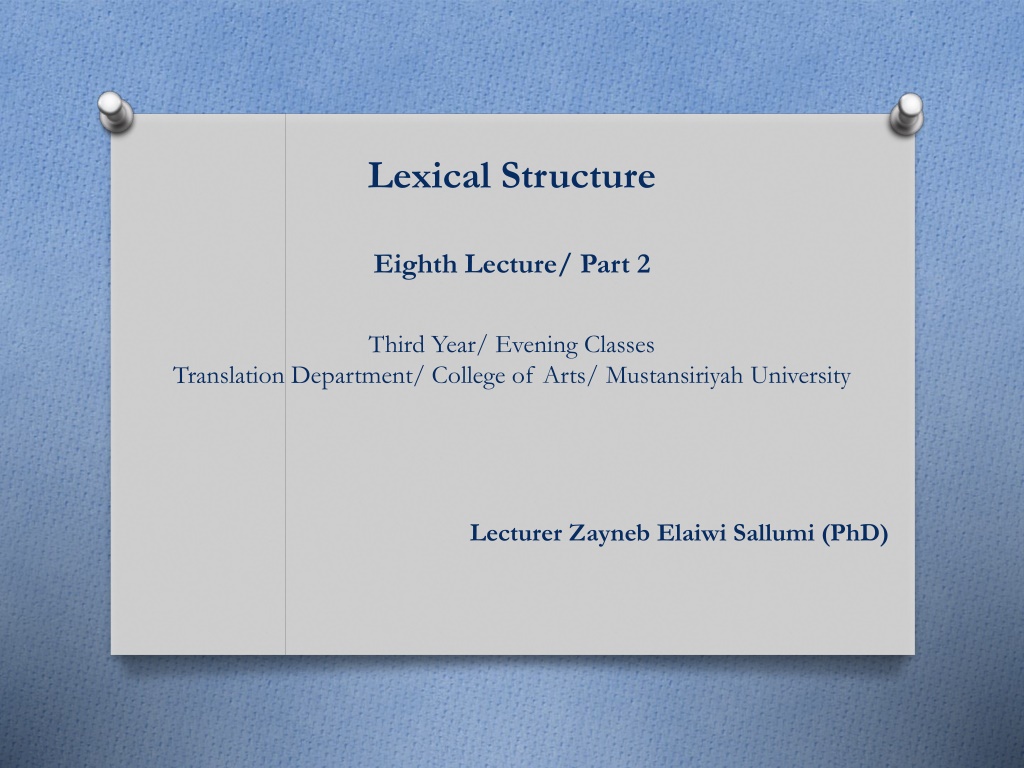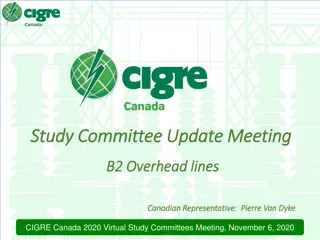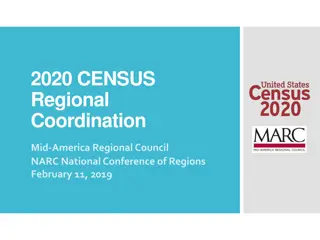Understanding Lexical Structure: Antonymy, Hyponymy, and Components
Antonymy refers to words with opposite meanings, divided into gradable and non-gradable categories. Hyponymy involves one term's meaning being included in another. Relational opposites show reversal of relationships, while componential analysis breaks down word meaning into distinct elements.
Download Presentation

Please find below an Image/Link to download the presentation.
The content on the website is provided AS IS for your information and personal use only. It may not be sold, licensed, or shared on other websites without obtaining consent from the author. Download presentation by click this link. If you encounter any issues during the download, it is possible that the publisher has removed the file from their server.
E N D
Presentation Transcript
Lexical Structure Eighth Lecture/ Part 2 Third Year/ Evening Classes Translation Department/ College of Arts/ Mustansiriyah University Lecturer Zayneb Elaiwi Sallumi (PhD)
Antonymy O The term antonymy is used for oppositeness of meaning ; two forms with opposite meanings are called antonyms. O Some common examples are the pairs: alive/dead, big/small, happy/sad, hot/cold, long/short, male/female, married/single, old/new, rich/poor, true/false. O Antonyms are usually divided into two main types: gradable opposites along a scale non-gradable direct opposites
Gradable antonyms O Gradable antonyms, such as big/small, can be used in comparative constructions like I m bigger than you and A pony is smaller than a horse. O The negative of one member of a gradable pair does not necessarily imply the other. For example, the sentence My car isn t old does not necessarily mean My car is new.
Non-gradable antonyms O With non-gradable antonyms (also called complementary pairs ) , comparative constructions are not normally used. We don t typically describe someone as deader or more dead than another. O The negative of one member of a non-gradable pair does imply the other member. That is, My grandparents aren t alive does indeed mean My grandparents are dead.
Hyponymy O When the meaning of one form is included in the meaning of another, the relationship is described as hyponymy. O Examples are the pairs: animal/dog, dog/poodle, vegetable/carrot, flower/rose, tree/banyan.
Relational Opposites A quite different kind of opposite is found with pairs of words which exhibit the reversal of a relationship between items. Examples: buy/ sell, lend/ borrow, husband/ wife, parent/ child Relations are often characterised by logicians in terms of symmetry, transitivity, and reflexivity.
Components O Analysis in terms of components is the total meaning of a word seen in terms of a number of distinct elements or components of meaning. O Componential analysis attempts to treat components in terms of binary opposites, e.g., between (male) and (female), (animate) and (inanimate), (adult) and (non adult). O Notationally, we can express the existence or non-existence of pre-established semantic properties by using plus and minus signs, e.g., baby is [+ young], [+ human], [+animate]























